Obturation of root canals using the thermophil system
Maschinenübersetzung
Der Originalartikel ist in RU Sprache (Link zum Lesen) geschrieben.
The obturation technique using the Thermofil system was developed and presented by Dr. Ben Johnson ("New Gutta Percha Technology" J Endod 1978) as a simple method of introducing thermoplasticized gutta percha into a prepared root canal.
Detailed practice-oriented information on endodontic treatment in the online course What's NEW in endodontics: from anesthesia to obturation .
Initially, this system was located on a metal carrier. It was coated with a uniform layer of α-gutta-percha, designed to be heated over an open flame and applied to the root canal, previously dried and treated with a small amount of sealant.
Advantages of the Thermophile system included: apical sealing, fast learning curve, length control, conservative expansion of root canals. Since then, the Thermofil system has been redesigned and improved, with the introduction of plastic carriers, specialized ovens and even specially made gutta-percha rods.
The Thermophile system consists of a number of components:
- thermal obturators;
- Thermaprep oven;
- verifiers;
- specialized burs.
Obturators for the thermophil system
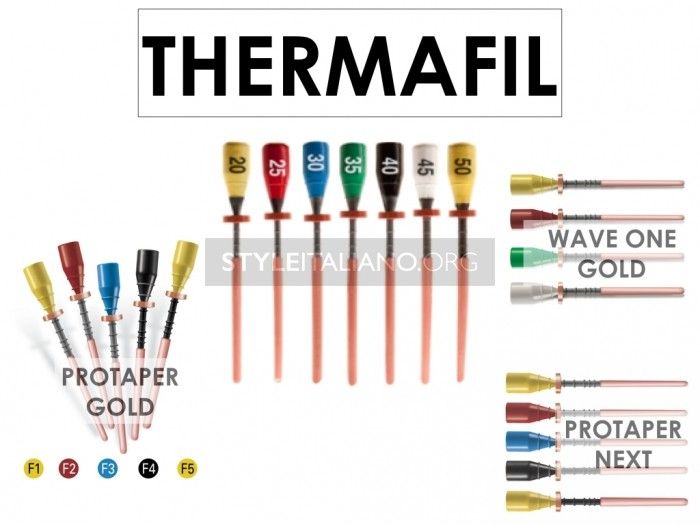
Photo 1. Thermophile obturators consist of a core (core) of radiopaque plastic (carrier) completely coated with a uniform layer of gutta-percha. The carrier features a colored handle (the color indicates the diameter of the carrier tip according to ISO standardization) and is 25mm long. It is also equipped with a longitudinal groove, which has the function of increasing flexibility and facilitating removal (gutta-percha). The circular projections placed at 18, 19, 20, 22 and 24 mm respectively from the tip are useful guides when inserting them into the canal. Thermafil obturators are available in 17 sizes ranging from 0.20 to 1.40 mm in tip diameter and with a thickness of about 4%. Recently, Thermafil obturators have been introduced to suit various root canal protocols with instruments such as Protaper Universal, Protaper Next, Protaper Gold and Wave-One.
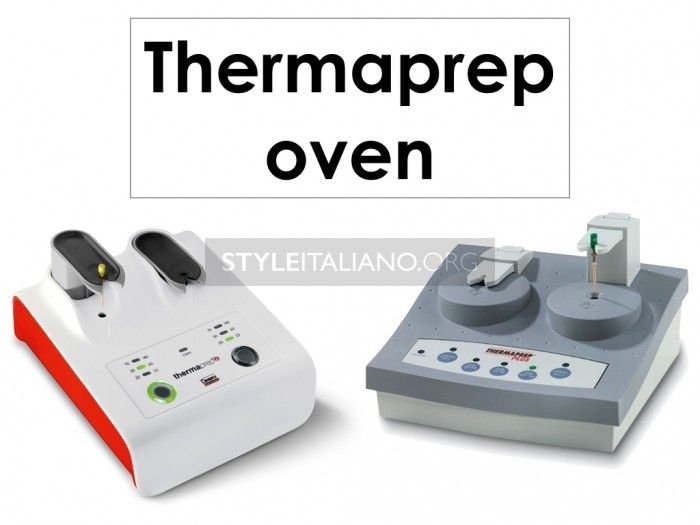
Photo 2. The Thermaprep oven meets the heating requirements of the obturators for the Thermafil system, thanks to the production of heat by the Joule effect. The old version (on the right) allows you to heat only one obturator at a time, without a soft button. It is recommended to select the maximum heating program for all types of obturators. The new version (left) provides simultaneous heating of two obturators in selected programs and a controlled power button. Select the correct diameter to match the obturator and activate the start button to heat up the gutta-percha.
Verifiers for the Thermophile system
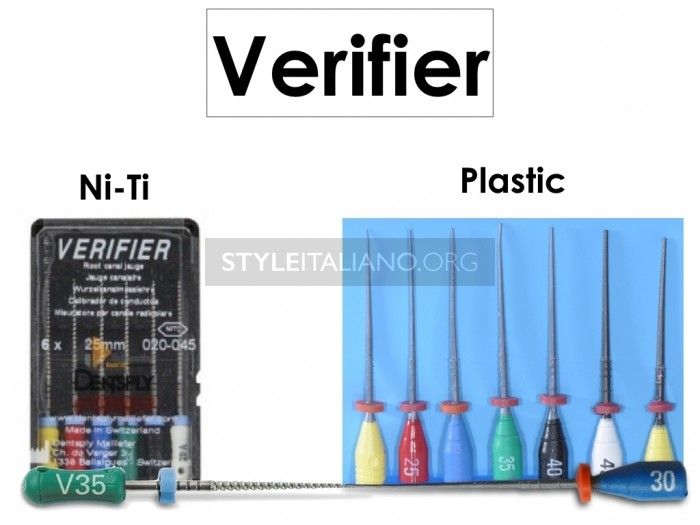
Photo 3. Verifiers for the Thermofil system are made of Ni-Ti alloy. Available in 12 sizes with diameters ranging from 0.20 to 0.90 mm and a taper of 5%, slightly higher than the plastic carrier (about 4%). They are similar to hand profiles with a blunt tip and radial cuts, so they can be used for small refinements. PLASTIC verifier. A plastic carrier (constriction of about 4%) without gutta-percha coating allows accurate assessment of adaptation to the canal without the risk of smear layer formation.
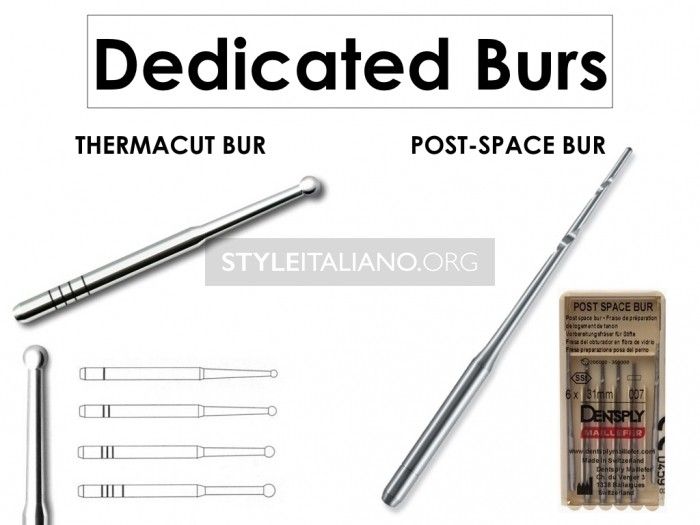
Photo 4. Special burs. The cutting burs in the thermofil system for the turbine handpiece are made of stainless steel with a smooth spherical tip. The cutting action in relation to the carrier is carried out through heat created by frictional force (designed for dry operation). They have a standard length of 25 mm and are manufactured in 4 different diameters. Burs for preparing the pin space. These are turbine handpiece burs - steel cutting tools for preparing the channel of the pin space after obturation using the Thermofil system. Available in two diameters, 25 or 31 mm long. These smooth burs have a rounded tip. Two transverse grooves along the rod allow you to adjust the depth (unsealing). By using the heat generated by frictional force, both the carrier and the gutta-percha can be quickly removed to the desired depth.
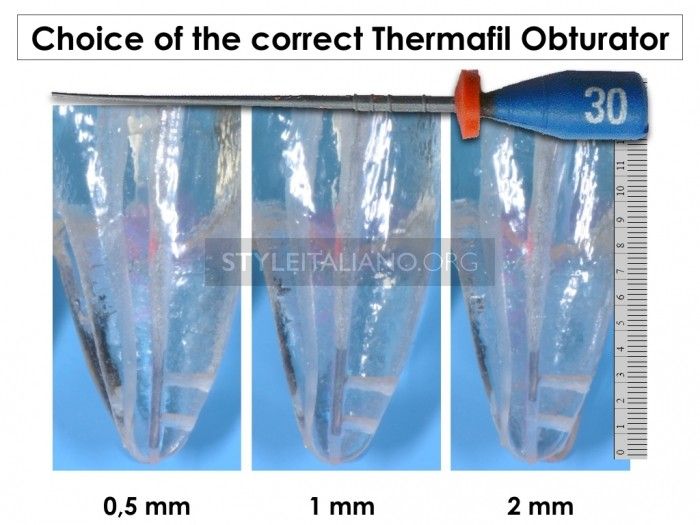
Photo 5. The sequence ensuring ideal filling of the root canal with the Thermafil system will be described below:

Photo 6. The easiest way is to use a plastic carrier without gutta-percha. It will actually match the size of the media, and be 0.5-1 mm shorter than the working length. This will allow the apical third to be filled with gutta-percha and sealer, thereby increasing the tightness. If there is moisture in the canal (but not hypochlorite!), select a verifier that matches the size of the last file used in final processing. The correct verifier is the largest of those that do not reach 0.5-1 mm to the apex of the root canal.
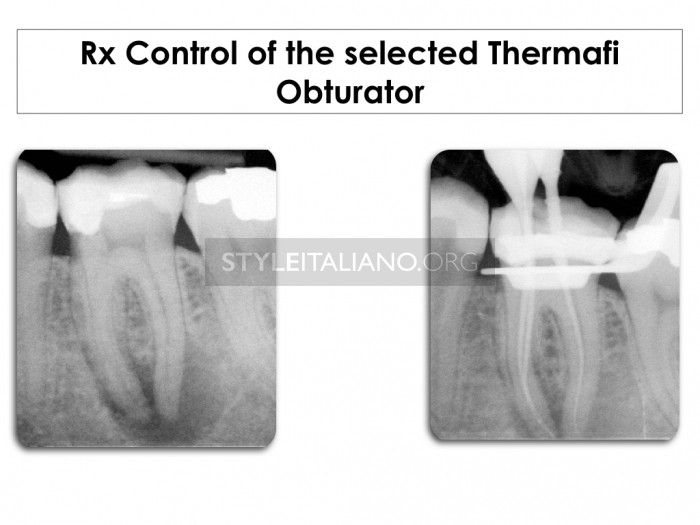
Figure 7: The position and adaptation of the plastic carrier should be confirmed with periapical radiography. If the obturator is not in the correct position, check the canal finishing condition again or select a more suitable obturator.
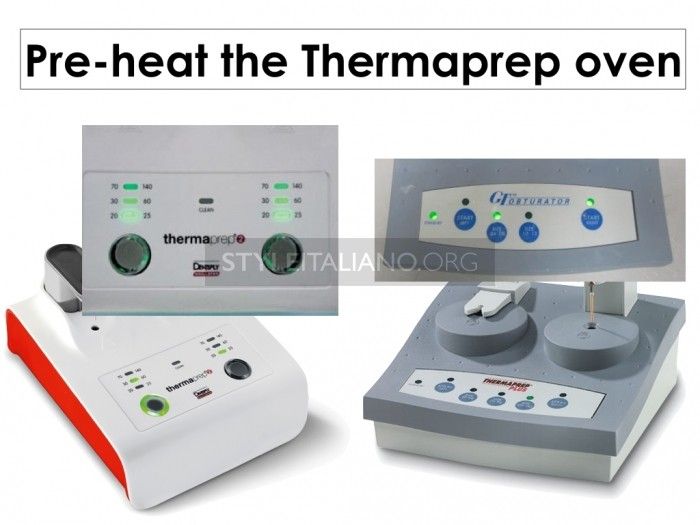
Photo 8: Preheat the Thermaprep oven to reduce wait time and achieve more uniform heating.
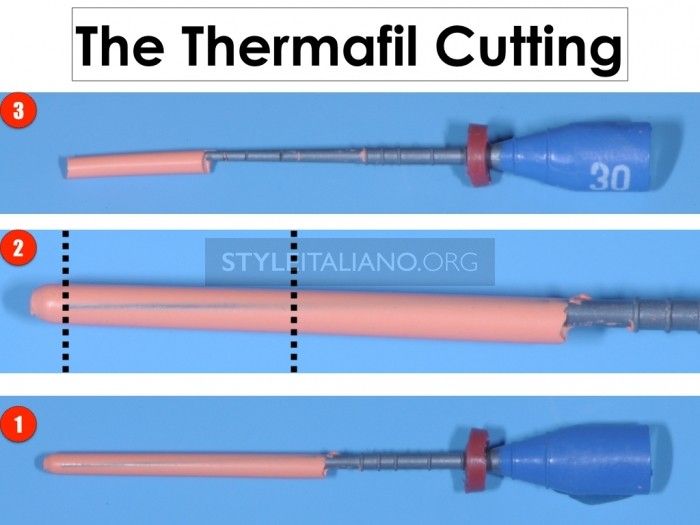
Photo 9. The amount of gutta-percha that coats the tip of the carrier is variable. Thus, it is better to remove some of the gutta-percha at the tip with a scalpel to make the carrier visible. This will prevent the risk of gutta-percha extending beyond the apex of the root canal.
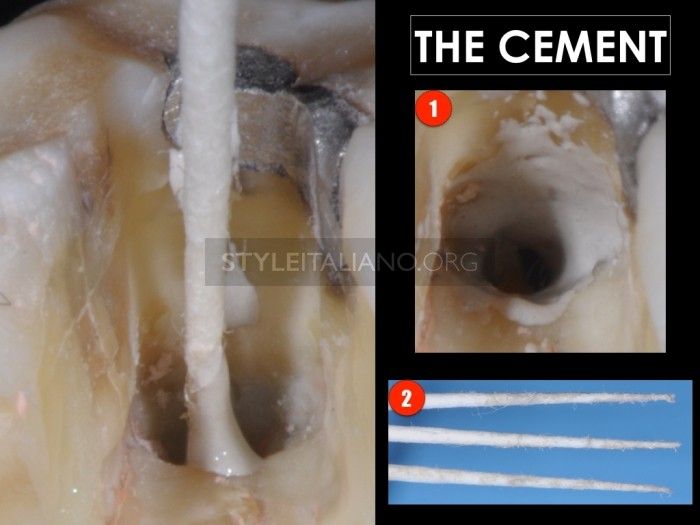
Photo 10. The Thermofil technique involves using a small amount of sealer to prevent the risk of extrusion beyond the apex.
There are two main ways to introduce sealer into the canal:
- Only the coronal third of the canal is covered with a small amount of sealer.
- 3-Pin Technique: The sealer is placed into the canal using a paper point and the excess is removed using the other two. This is necessary to form a film of sealer around the dentinal walls of the canal, located several mm less than the measured working length.
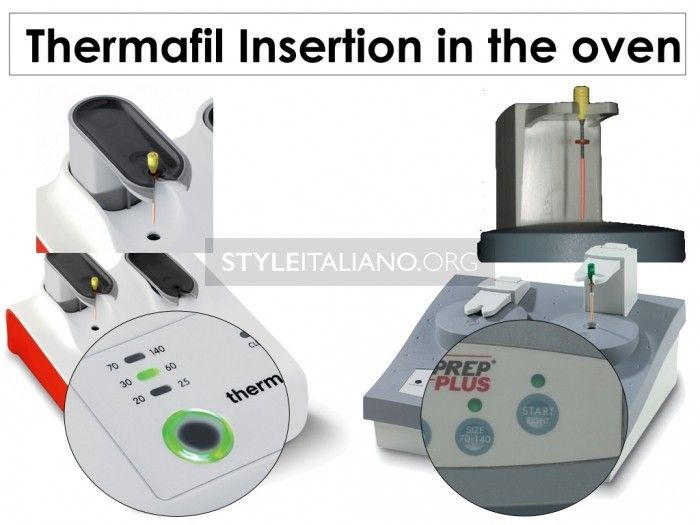
Photo 11: Insert the selected obturator with the fixed rubber stopper into the lower fork of the Thermaprep oven.
Place the fork in the heating station and select the maximum program (for an old-style Thermaprep oven) or select a special program (for a new-style Thermaprep oven). Wait until the light signal starts flashing, accompanied by a sound.
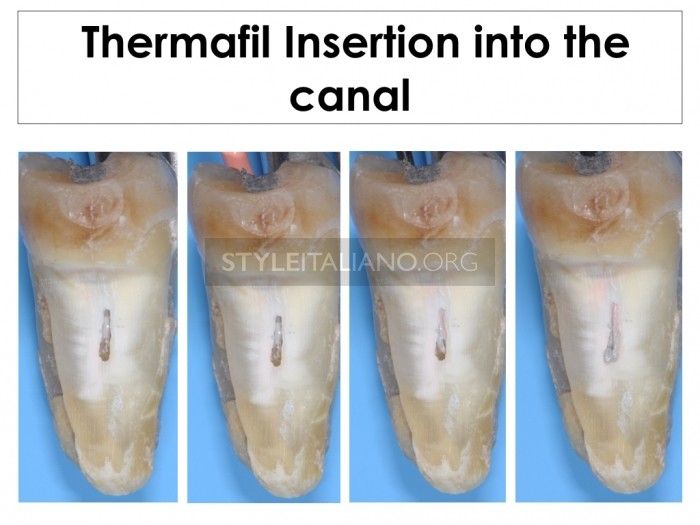
Photo 12. The Thermophile system obturator, heated once in the oven, is slowly inserted into the canal with slight deviations clockwise and counterclockwise until it reaches the desired length (approximately three seconds). The obturator should be held under slight pressure for 8-10 seconds before being cut at the mouth.
If problems arise during this sequence of actions, such as premature cooling of the gutta-percha or failure to reach working length, it is advisable to stop and take an x-ray with the carrier still uncut. If an error occurs, the failed obturator can be easily removed and the procedure successfully repeated.
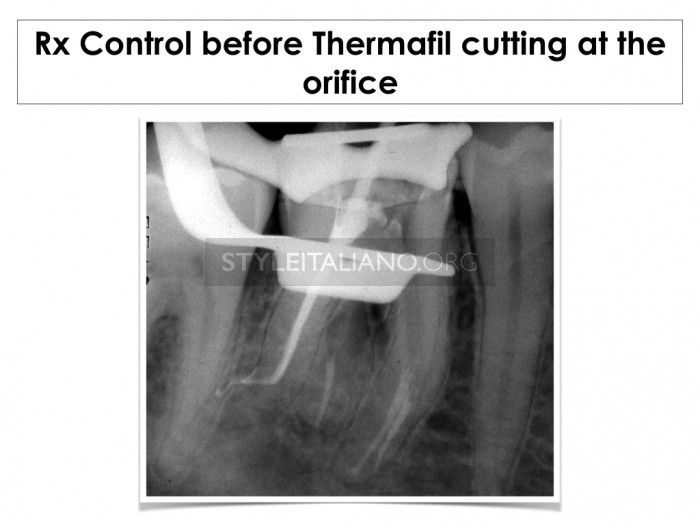
Photo 13. Before cutting, it is recommended to check radiographically the correct position of the obturator and the appropriate working length. With a handle, you can easily remove the plastic media, reshape it, and fill the channel again.
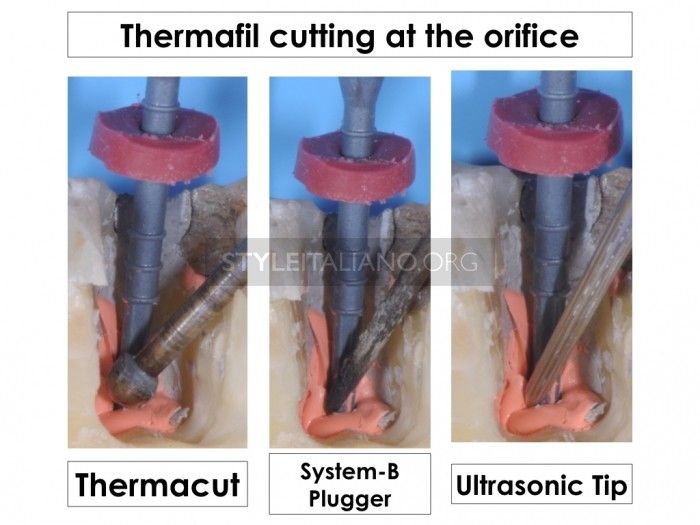
Photo 14. Thermofil system obturator should be cut in the area of the canal mouth.
This operation can be done with:
- special cutting bur for the Thermofil system;
- plugger 600° System-B;
- ultrasonic tip.
Thermophile system
The Thermofil system is one of the most predictable and effective methods for properly obturing the complex three-dimensional root canal system and is one of the few that allows heated gutta-percha to be applied directly to the apex. It has proven to be very effective, especially in narrow, long and curved canals where it is difficult to introduce a heat carrier or plugger into the last 4 mm of the canal to properly heat the cones of the gutta-percha points.
About the basic principles and protocols for root canal filling in the online course Endodontics from A to Z with Dmitry Nikolaev .
http://www.styleitaliano.org/

